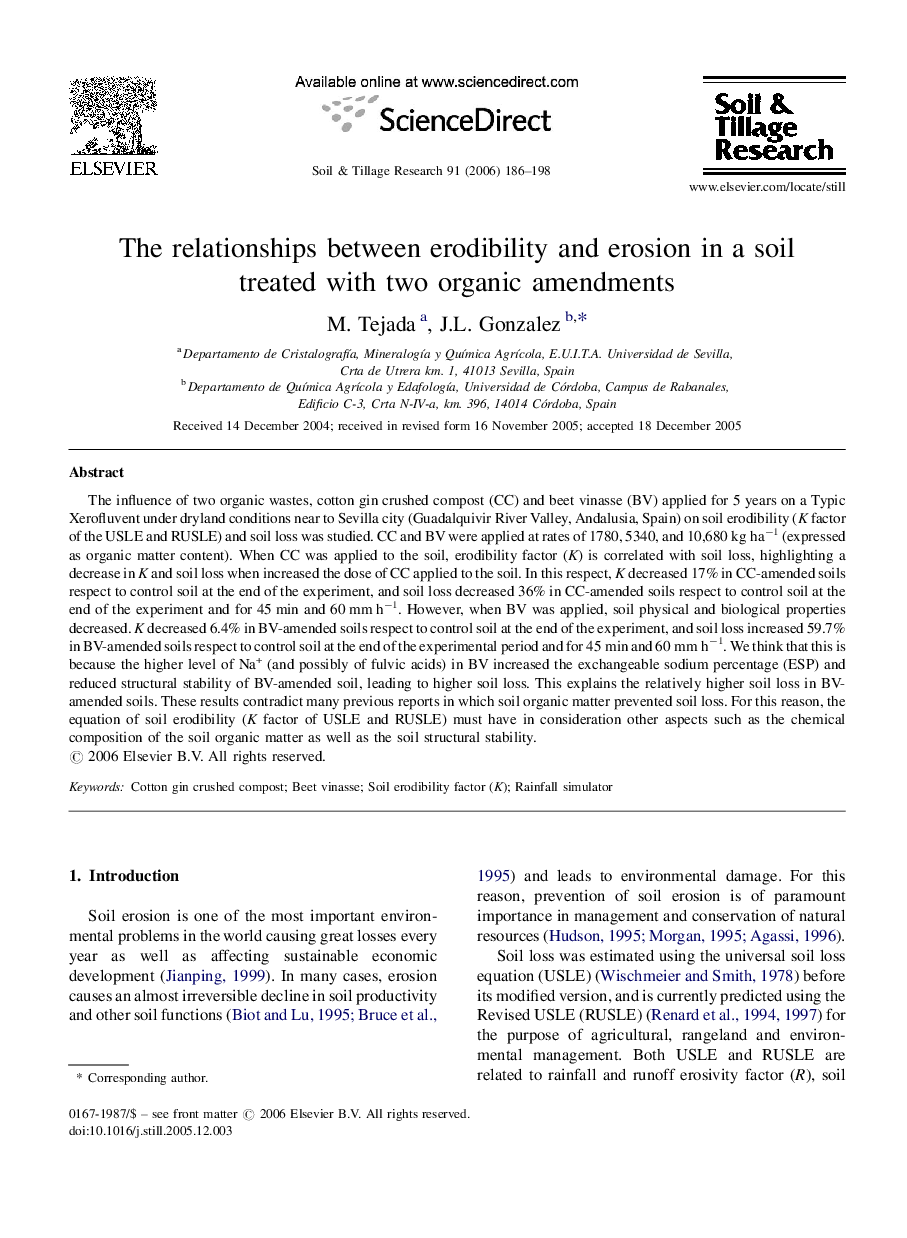| Article ID | Journal | Published Year | Pages | File Type |
|---|---|---|---|---|
| 306859 | Soil and Tillage Research | 2006 | 13 Pages |
The influence of two organic wastes, cotton gin crushed compost (CC) and beet vinasse (BV) applied for 5 years on a Typic Xerofluvent under dryland conditions near to Sevilla city (Guadalquivir River Valley, Andalusia, Spain) on soil erodibility (K factor of the USLE and RUSLE) and soil loss was studied. CC and BV were applied at rates of 1780, 5340, and 10,680 kg ha−1 (expressed as organic matter content). When CC was applied to the soil, erodibility factor (K) is correlated with soil loss, highlighting a decrease in K and soil loss when increased the dose of CC applied to the soil. In this respect, K decreased 17% in CC-amended soils respect to control soil at the end of the experiment, and soil loss decreased 36% in CC-amended soils respect to control soil at the end of the experiment and for 45 min and 60 mm h−1. However, when BV was applied, soil physical and biological properties decreased. K decreased 6.4% in BV-amended soils respect to control soil at the end of the experiment, and soil loss increased 59.7% in BV-amended soils respect to control soil at the end of the experimental period and for 45 min and 60 mm h−1. We think that this is because the higher level of Na+ (and possibly of fulvic acids) in BV increased the exchangeable sodium percentage (ESP) and reduced structural stability of BV-amended soil, leading to higher soil loss. This explains the relatively higher soil loss in BV-amended soils. These results contradict many previous reports in which soil organic matter prevented soil loss. For this reason, the equation of soil erodibility (K factor of USLE and RUSLE) must have in consideration other aspects such as the chemical composition of the soil organic matter as well as the soil structural stability.
